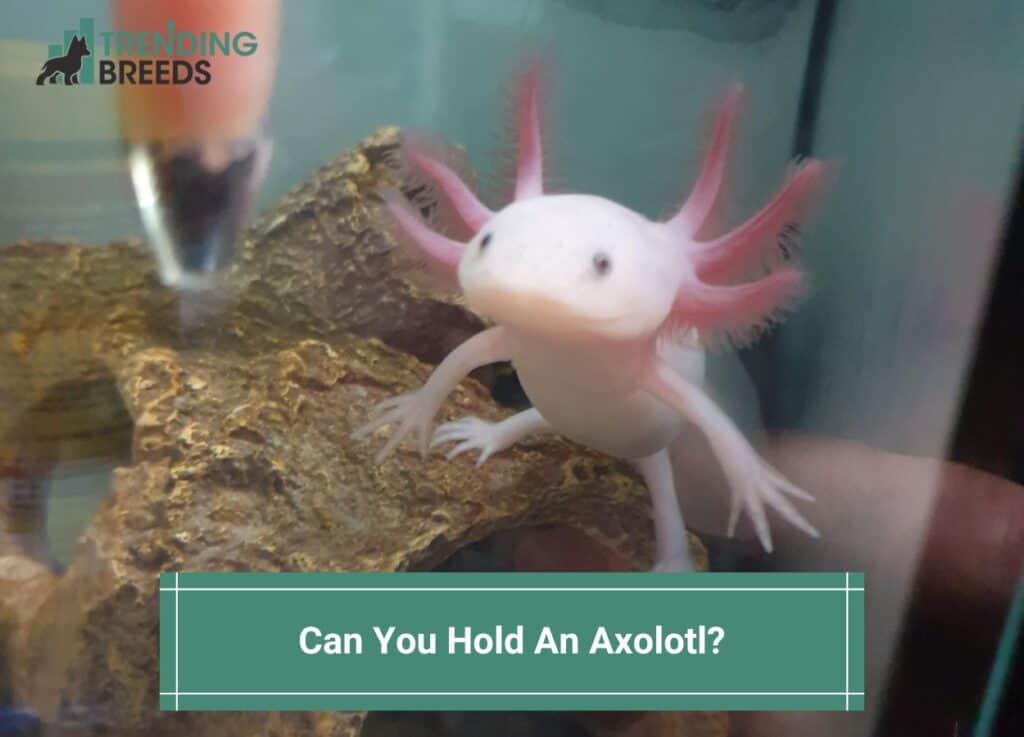
The Axolotl, also known as the Mexican salamander, has captivated the hearts of numerous animal enthusiasts, gaining immense popularity in recent times. Since they like to live in water, you might wonder: can you hold an axolotl?
While it is possible to hold these creatures briefly, experts strongly advise against doing so.
Axolotls are delicate creatures susceptible to injuries, stress, and harm from human interaction. Hence, there are safety concerns surrounding holding axolotls.
Read on to learn more.
Before you scroll further down this guide, check out these other animal-related articles: Axolotl Shedding: What To Do And Why and Can You Run With a Dachshund?.
Table of Contents
Can You Hold An Axolotl? They Would Prefer If You Didn’t

Axolotls have recently emerged as captivating aquatic pets thanks to their intriguing ability to regenerate body parts.
These tiny amphibians, however, require proper handling to ensure their well-being.
While some may wonder about the possibility of touching or handling axolotls, it is essential to note that experts strongly discourage it.
Axolotls possess delicate bodies and sensitive skin, making them prone to injuries and even mortality from rough handling.
Moreover, they rely on a slime layer on their skin as a protective barrier against bacterial infections.
Disturbing or removing this slime layer can leave axolotls vulnerable to disease.
The RSPCA, an esteemed animal welfare organization, also emphasizes you should only hold when necessary.
If handling an axolotl becomes necessary, do it briefly and cautiously. Axolotls are highly susceptible to stress from handling or environmental changes.
While touching or holding an axolotl is discouraged, alternative ways exist to interact with these fascinating creatures.
Observing them from outside the tank can be equally captivating, and providing them with various hiding places and structures to explore can keep them entertained and stimulated.
Furthermore, feeding an axolotl presents an opportunity for interaction.
Offering live food such as brine shrimp or bloodworms can help satisfy their natural hunting instincts and provide a rewarding experience for both the Axolotl and the observer.
Do They Like Being Touched?

Axolotls are renowned for their extraordinary ability to regenerate lost body parts and hold significant scientific value.
However, it is strongly advised against touching or handling axolotls, as they are delicate creatures that can easily be injured or distressed by human contact.
Axolotls possess thin, porous skin susceptible to human touch damage. Handling them can disrupt their protective slime layer, leaving them prone to bacterial infections.
Additionally, axolotls are prone to stress caused by environmental changes, and handling can exacerbate this stress.
Elevated stress levels can lead to illness or even mortality, underscoring the importance of minimizing unnecessary contact.
It is crucial to understand that axolotls do not form the same bonds with humans as more conventional pets like dogs or cats.
They cannot recognize their owners and do not seek or enjoy physical interaction.
Therefore, it is best to respect their natural preferences and refrain from handling or touching them unless necessary.
Can You Take Axolotl Out of the Water?
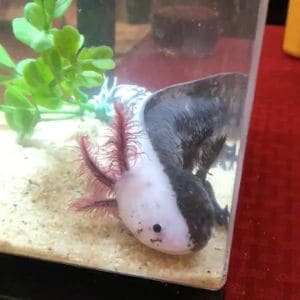
Extended periods of holding an axolotl out of the water are not recommended. As amphibians, axolotls rely on water to breathe, absorbing oxygen through their skin.
While it is possible to briefly remove an axolotl from the water for a few seconds, prolonged exposure to air can be detrimental to their health and well-being.
Taking an axolotl out of the water for an extended period can induce stress and hinder their ability to breathe correctly, negatively affecting their overall health.
Additionally, being out of water can cause their skin to dry out, making them more susceptible to bacterial infections.
Handling axolotls should always be carefully approached, and their aquatic habitat should only be disturbed when necessary.
Suppose it becomes necessary to move an axolotl out of the water, such as during tank maintenance.
In that case, it should be done quickly and preferably with the assistance of a veterinarian or an experienced axolotl owner.
In such situations, it is essential to keep the axolotl moist by placing it in a shallow container with a damp towel to prevent dehydration.
What is the Right Way of Handling an Axolotl?
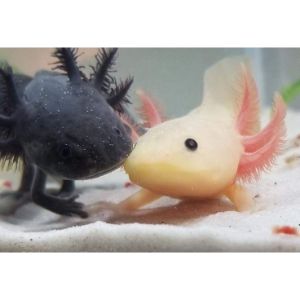
It is crucial to handle them with care and attention to ensure the well-being of your axolotl. Here are some guidelines:
Wet Your Hands
Before handling an axolotl, wet your hands. That helps to protect their delicate skin by preserving their protective slime layer.
Use Both Hands
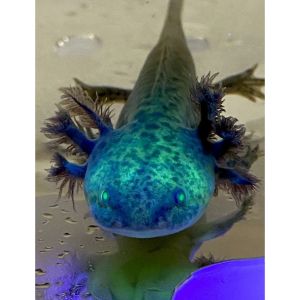
When carrying an axolotl, support their entire body. Use one hand to keep the head and the other to support the tail.
That helps to distribute their weight evenly and prevents unnecessary strain.
Avoid Squeezing
Axolotls have soft and delicate bodies, so avoid squeezing them.
Applying excessive pressure can lead to injuries or even death. Handle them gently and refrain from putting too much force on any part of their body.
Limit Handling

Axolotls are not fond of being handled or touched.
Minimize handling to essential situations, such as during tank maintenance or transferring them to a different tank.
That helps to reduce stress and potential harm to the axolotl.
Watch for Signs of Stress
Pay attention to the axolotl’s behavior when handling them.
Symptoms of anxiety include quick movements or body twisting. If you observe these signs, gently return the axolotl to its tank to alleviate stress.
Wash Your Hands

Thoroughly wash your hands before and after handling an axolotl.
That helps to prevent the transmission of harmful bacteria to the axolotl and maintains a healthy environment for them.
By following these guidelines, you can provide the best care for your axolotl while minimizing stress and potential harm during handling.
What is the Safe Way of Handling an Axolotl?
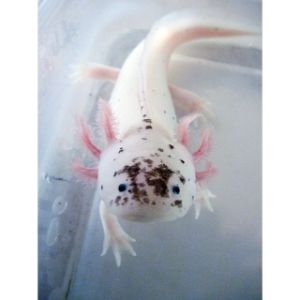
When handling an axolotl, it is essential to always keep the whole body supported and submerged. Here are the recommended steps for holding an axolotl:
Use a Small Container or Net
It is advisable to use a small container or net to gently scoop up your axolotl to avoid unnecessary chasing and stress.
Please Keep Them in the Water
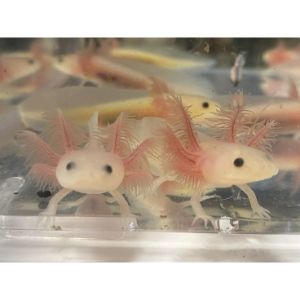
Once safely placed, put the axolotl in the container or net, and ensure it remains submerged. That helps prevent stress and maintains their well-being.
Support the Complete Body
With one hand supporting the head and another supporting the tail, carefully provide support for the entire body of the axolotl.
Keep the Head Above Water

It is crucial to ensure that the axolotl’s head remains above the water surface throughout the handling process.
That prevents accidental drowning and allows them to breathe correctly.
Limit Holding Time
Axolotls are not fond of being held or touched, so it is essential to limit the duration of holding to only when necessary.
Minimizing handling time helps reduce stress and potential harm to the axolotl.
Please Return Them to Their Tank With Care

Once you have completed the necessary handling, gently place the axolotl back into its tank, ensuring they are entirely in water.
By following these steps, you can safely handle your axolotl while minimizing stress and maintaining their well-being.
Risks Associated With Holding or Touching Axolotls

Handling or interacting with an axolotl presents various hazards. Here are some examples:
Injury
Axolotls have delicate bodies, and improper handling can result in injury or even death.
Mishandling, squeezing, dropping, or applying excessive pressure can lead to broken bones or internal organ damage.
Stress
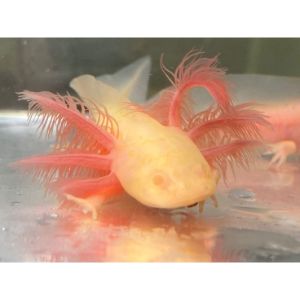
Axolotls dislike being hand-held or touched, which can cause significant stress.
This stress can result in losing their protective slime coating, making them more susceptible to illnesses and infections.
Disease Transmission
Axolotls have the potential to carry bacteria like salmonella, which can transfer to humans.
Handling an axolotl without proper hand hygiene and neglecting to wash hands thoroughly afterward can pose a risk of contracting such illnesses.
Amputation Complications
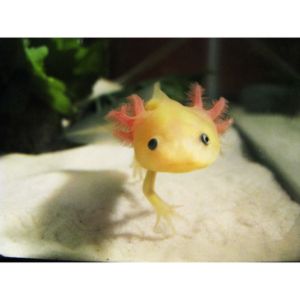
While axolotls can regenerate lost limbs, mishandling can result in the amputation of their limbs.
Although they can be restored, the process takes time and can cause discomfort for the animal. Improper handling may delay or inhibit the regeneration process.
Water Quality
When handling an axolotl, there is a risk of transferring germs, pollutants, or oils from your skin to the water in the tank.
That can lead to a decline in water quality and an increased likelihood of the axolotl falling ill.
Considering these hazards, it is essential to minimize handling and ensure that any interaction with an axolotl is done carefully, with proper hygiene practices to protect both the axolotl and the handler.
FAQs About Holding Axolotls

Is it OK to touch an Axolotl?
It is generally not recommended to touch or handle axolotls unless necessary.
Axolotls have delicate skin and a protective slime layer that can easily be damaged or removed by human touch.
That can leave them vulnerable to bacterial infections and other health issues. Also, axolotls can become stressed by handling, which can adversely affect their well-being.
It is best to observe axolotls from outside the tank and provide them with a suitable and enriching environment within their habitat.
How long can you keep an axolotl out of water?
Axolotls are aquatic creatures and rely on water for their survival.
They should not be out of water for an extended period.
While they can tolerate brief periods of being out of the water, minimizing their time outside their aquatic environment is essential.
Ideally, an axolotl should be returned to water within a few minutes to avoid stress and potential harm.
Prolonged exposure to air can lead to breathing difficulties and negatively affect their health and well-being.
If you need to handle an axolotl for any reason, it is best to do so quickly and cautiously, ensuring they are returned to the water as soon as possible.
Do axolotls recognize their owners?
Axolotls cannot recognize their owners like some other pets, such as dogs or cats, can. They have relatively simple brains and limited cognitive abilities.
Axolotls primarily rely on their senses to interact with their environment but do not possess the same social recognition or attachment level seen in more complex animals.
However, axolotls can become accustomed to the presence of their owners and may associate them with the regularity of feeding or other positive experiences.
They may exhibit behaviors that indicate familiarity, such as being less skittish or approaching their owners when giving the animal food.
While they may not recognize their owners like mammals, they can still form associations with consistent caretakers.
It’s important to note that axolotls are primarily solitary creatures, and their interactions with humans are mainly based on their needs and the environment provided to them.
Are axolotls friendly?
Axolotls are docile and peaceful animals. They are not aggressive towards humans or other species.
However, it’s important to note that axolotls are not inherently “friendly” in the same way we might describe social or interactive behaviors in mammals like dogs or cats.
Axolotls have limited social behaviors and interactions. They are primarily solitary creatures that spend most of their time hiding and exploring their environment.
They do not seek out or require social interaction or attention from humans or other animals.
While axolotls may become accustomed to the presence of their owners and may show some curiosity or interest during feeding times, they do not display the same level of social bonding or recognition as more interactive pets.
It’s important to respect their natural behaviors and provide them with a suitable and enriched habitat that meets their needs for their well-being.
Can You Hold An Axolotl?
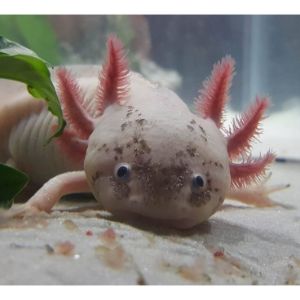
Axolotls are fascinating aquatic creatures that captivate the interest of many animal enthusiasts.
While they possess unique qualities such as regenerative abilities and intriguing physical characteristics, it’s important to approach their care and interaction with caution and respect for their natural behaviors.
Axolotls are delicate animals with sensitive skin, and rough handling or prolonged time out of water can cause harm and stress.
They do not recognize their owners the same way as more interactive pets, but they can become accustomed to their presence and associate them with positive experiences like feeding.
Providing a suitable and enriching environment within their aquatic habitat is crucial for their well-being.
That includes maintaining water quality, offering hiding places, and ensuring a proper diet.
Observing axolotls from outside the tank and minimizing unnecessary handling is recommended to reduce stress and potential health risks.
While axolotls may not exhibit typical “friendliness” or social behaviors, they offer a unique and captivating experience as fascinating creatures to study and appreciate.
By understanding their specific needs and respecting their natural behaviors, we can ensure these amazing amphibians’ best care and enjoyment.
If you find this guide, “Can You Hold An Axolotl,” informative and helpful, you can check out these other animal-related articles from our team:
- Can You Go Horse Riding While Pregnant?
- Can You Feel a Dog’s Microchip?
- Can You Sell Inbred Puppies?
You can learn more about axolotls by watching “10 Axolotls Facts That Will Surprise You!” down below:




